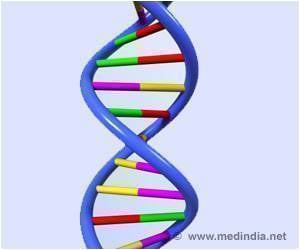The evolutionary change that made the naked mole rat so uniquely pain-free has been pinpointed by a study published in Cell Reports.

‘The evolutionary change that made the naked mole rat so uniquely pain-free has been demonstrated by a study published in Cell Reports.’





The African naked mole rat is an odd, homely creature with the
closest thing to real-life super powers on earth. These small rodents
can live for 32 years, they are cancer-resistant, and they are
impervious to some types of pain. "We think evolution has selected for this tweak just subtly enough so that the pain signaling becomes non-functional, but not strong enough that it becomes a danger for the animal," says lead author Gary R. Lewin, a professor at the Max-Delbruck Center for Molecular Medicine in Berlin, Germany.
The scientists who conducted the study have a good idea of what goes on at a cellular level when the naked mole rat is exposed to thermal hyperalgesia.
In response to high temperatures and inflammation around sensory neurons, nerve growth factor (NGF) molecules bind to a receptor called TrkA. This kicks off a cascade of chemical signals that "sensitize" an ion channel - called TRPV1 - on the surface of the sensory neuron so that it opens. Once TRPV1 opens, it results in sensory nerve firing that tells the brain to register pain at temperatures that are not normally painful.
Through more than a dozen carefully designed experiments, Lewin and colleagues found what differentiates the naked mole rat from other animals in this process - a small change in their TrkA receptor.
Advertisement
Researchers compared the gene for the naked mole rat's TrkA receptor to those of 26 other mammals, and five other African mole rat species. They discovered a switch of just one to three amino acid changes on one section of the naked mole rat TrkA receptor that make it less sensitive.
Advertisement
Further experiments revealed that the tweak on the naked mole rat's TrkA receptor didn't render it dysfunctional, but hypo-functional. Their TrkA receptor could respond like that of other animals, if the naked mole rat cell was exposed to ten times the normal concentration of NGF.
This subtle difference between a hypo-functional and a dysfunctional TrkA receptor may explain why the naked mole rat could survive without the typical neurodegeneration found in animals with mutations that completely shut down NGF signaling. Previous research has shown developing embryos require NGF signaling to develop a normal pain signaling systems.
However, the new study found that naked mole rats are born with roughly the same number of pain sensors as newborn mice. It's only by adulthood that the naked mole rat's pain sensors dwindle by two-thirds compared to any other mammal. Evolution may have selected a TrkA receptor that works well enough for the animal developing as an embryo, but leaves adults with fewer nerve receptors and partially pain-free.
Losing thermal hyperalgesia might help the naked mole rats survive in their crowded underground colonies, where the close contact can be uncomfortably hot but thermal hyperalgesia may not be helpful in this warm environment. And it's possible that losing sensory neurons as adults may help the animals conserve energy.
"They live in desert regions underground, and they have to do a lot of work to get their food," says Lewin. "They have the lowest metabolic rate of any mammal. Evolution has shut down everything that is not absolutely necessary - including extra nerve receptors."
Lewin and his colleagues are planning future studies in mice bred to have the unique naked mole rat TrkA receptor.
"We hope to see that these modified mice will show lots of features that make naked mole rats unique," says Lewin.
Source-Eurekalert









